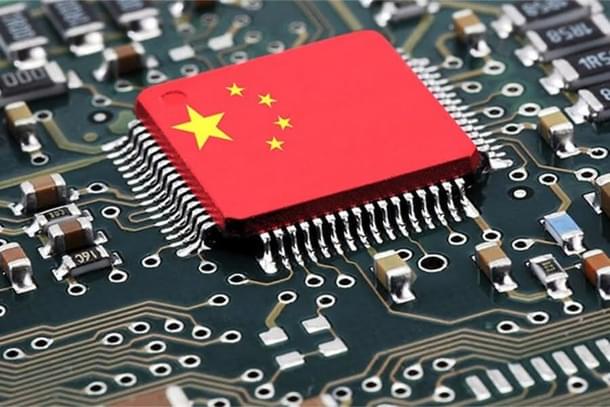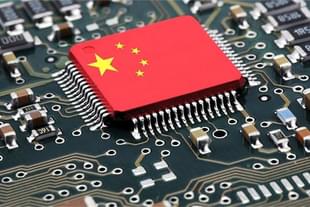Tech
China Is Pouring Billions Aiming To Bolster Self-Sufficiency In Semiconductors But Progress Is Patchy
Swarajya Staff
Aug 23, 2024, 04:09 PM | Updated 05:27 AM IST
Save & read from anywhere!
Bookmark stories for easy access on any device or the Swarajya app.


Chinese firms are at least five years behind global leaders in manufacturing of leading-edge logic semiconductor chips, remain laggards in memory chips, languish decades behind in semiconductor manufacturing equipment but have made significant inroads in semiconductor design and production of legacy semiconductor chips, according to a report published by the Information Technology and Innovation Foundation (ITIF), a Washington-based science and technology policy think tank.
China’s government has been pouring hundreds of billions of dollars to accelerate the development of an indigenous semiconductor ecosystem across virtually all segments of the semiconductor value chain, from semiconductor design and fabrication to assembly, test, and packaging (ATP).
Logic Chips
In leading-edge logic chips, Semiconductor Manufacturing International Corporation (SMIC), China’s flagship foundry, is at least five years behind Taiwan Semiconductor Manufacturing Company (TSMC), the world's largest contract chipmaker.
Leading-edge logic chips are generally viewed as being sub-14 nanometers, while “legacy” (often called “mature-node”) chips refer to those manufactured using 28 nm or larger technology processes.
While TSMC, the Taiwanese semiconductor chip manufacturing behemoth that pioneered the pure-play foundry business model, has already begun mass-producing 3-nanometre nodes, used in making some of the world’s most sophisticated chips. SMIC has only recently commenced producing chips at the 7-nanometer node.
Widely regarded as a ‘national champion’ for the pivotal role it plays in China’s ambition to turn self-reliant in semiconductors, SMIC is backed by several state-owned entities. In Dec 2020, the US administration placed SMIC on an export blacklist after determining that it posed a risk due to close ties with the Chinese military and denied access to advanced US technology.
Semiconductor manufacturing equipment (SME)
Regarding semiconductor manufacturing equipment (SME), such as the lithography tools that make chips, Chinese firms might be as many as five generations behind in this field, the report noted.
"The best machinery a Chinese company can produce makes chips that are 28 nanometers wide; the industry’s cutting-edge equipment can make 2-nanometer chips." the ITIF report quoted an analyst as saying.
According to recent data, Chinese firms imported almost US$26 billion worth of chipmaking machinery, a clear indication of the poor headway the country has made in chip equipment capabilities.
Chinese chip manufacturers continue to depend on firms such as ASML and Applied Materials for equipment.
ASML, which enjoys a near monopoly on advanced extreme ultraviolet (EUV) lithography equipment, is a crucial supplier to chip manufacturing giants including Intel, Samsung Electronics Co., and Taiwan Semiconductor Manufacturing Co (TSMC), but trouble began when it announced plans to sell their EUV machines to China.
To achieve semiconductor self-sufficiency, Beijing needs ASML’s one-of-a-kind EUV machines. Yet the company faced difficulty getting the Dutch government to renew a license to export the systems to China amid ongoing U.S. and China trade tensions. Eventually, the U.S. administration moved to ensure that ASML was barred from selling its most advanced machinery to China. Even less advanced tools are now in Washington’s crosshairs.
Legacy Chips
The ITIF report credited China for making substantial progress in the production of legacy semiconductors (those greater than 28 nanometers), although Chinese firms appear to be competing in this sector on a more price than innovation-intensive basis.
The growth of the legacy chip segment has been driven considerably by massive industrial subsidization designed to help its companies reach economies of scale in production.
China currently commands 27 percent of global production capacity for chips in the 20–45 nanometer range and 30 percent of global production capacity in the 50–180 nanometer range.
Memory Chip
The report noted that despite the memory chip industry has long been a strategic priority for China’s economic development, the progress has been limited.
Chinese memory chip manufacturers Yangtze Memory Technologies Co. (YMTC) and ChangXin Memory Technologies (CXMT) made impressive strides up until about 2020, but appear to have fallen off the innovation pace relative to global leaders since.
Design and Research
The report noted while China continues to lag behind global leaders in most facets of semiconductor design and fabrication, the country's intellectual property (IP) and innovation capabilities are accelerating rapidly as China pursues an aggressive whole-of-society strategy in an intense state-directed effort to achieve domestic semiconductor self-sufficiency.
While over half of global semiconductor patent applications filed in 2021 and 2022 came from Chinese companies, twice those from US companies, Chinese firms dedicated less of their revenues to research and development (R&D).





